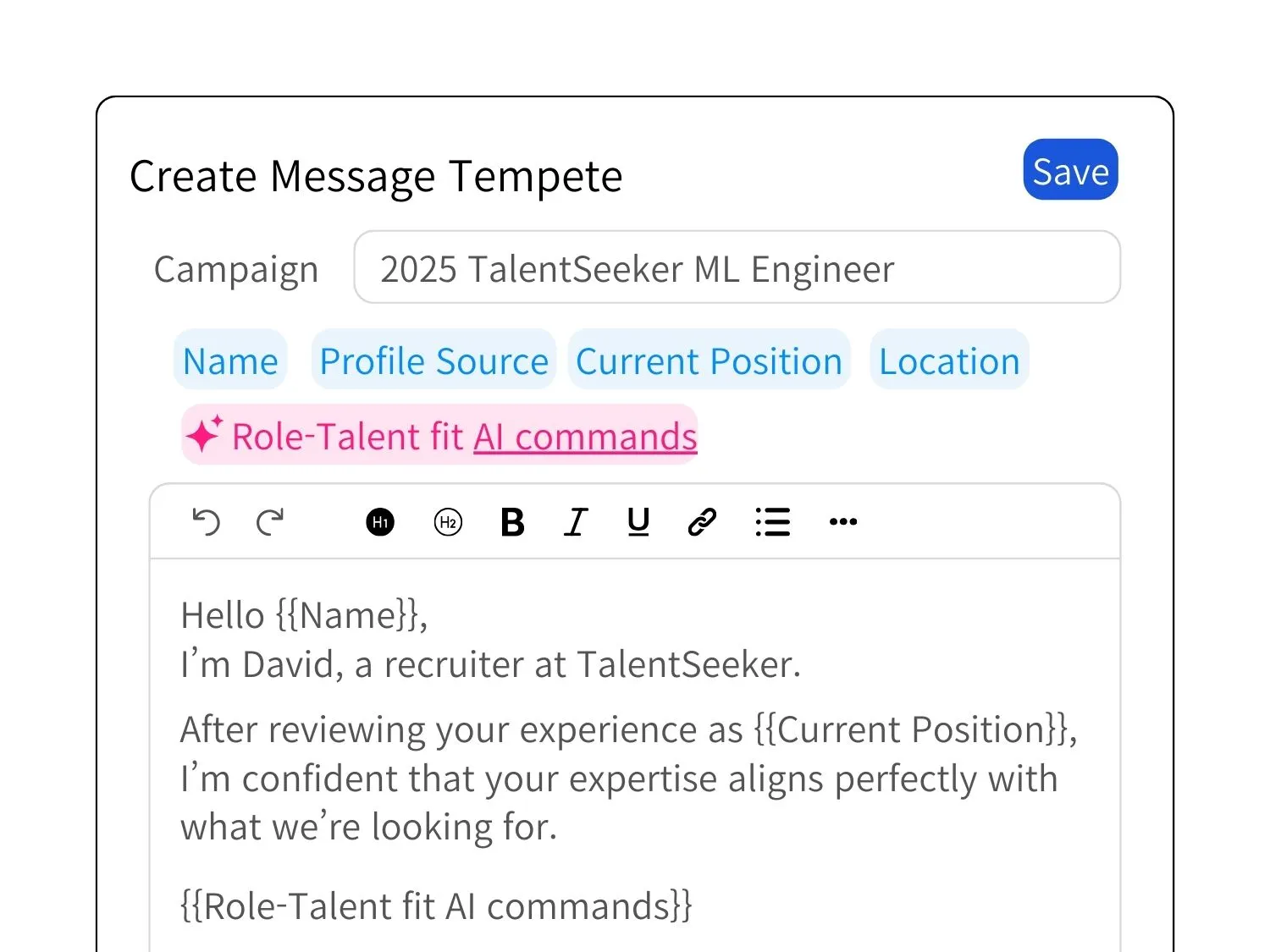Recruiting tools have come a long way. Today, AI can analyze millions of candidates, generate outreach messages, and predict top talent.
And yet, great hiring is still hard. Why?
Because while technology can automate the hiring process, it can't decide who you actually need to hire.
•
Why is this position necessary?
•
What skills and traits would make someone successful in our team?
•
What would make a candidate find this opportunity compelling?
Only your team can answer these questions.
And without a clear definition of who you're looking for, even the best AI loses direction.
In the end, great hiring is about clarity.
JD (Job Description) and Candidate Persona.
If these two definitions are clear, technology can execute the rest with speed and precision.
So, what exactly should we define? Is it enough to just write a JD and list out skill requirements?
The answer is no.
Many teams write the JD but skip or vaguely define the candidate persona.
But a successful hire requires both: the company's definition of the role (JD), and the candidate's point of view (Persona).
In this post, we break down:
•
How JD and Candidate Persona differ
•
Why these two definitions are the core of great hiring
•
How TalentSeeker turns clear definitions into automated workflow
JD & Persona: Two Essential Definitions in Hiring
Every successful hire starts with two definitions:
•
The JD (Job Description) — a public-facing summary of the role and qualifications needed
•
The Candidate Persona — an internal description of what the ideal candidate looks like, beyond the resume
While teams usually write JDs, they often skip personas or keep them vague.
But the JD is your external definition, and the persona is your internal compass.
Without both, every step that follows — sourcing, evaluating, messaging — loses clarity.
Without Clear Definitions, Workflow Falters
Here’s how the typical hiring flow breaks down:
If your first step is off, the rest never lines up.
Many teams run into problems without realizing the root cause is a lack of definition.
They rush to hiring process with an "just start sourcing" mindset.
This leads to poor matches, low engagement, and wasted time.
•
"We don't just need a senior dev, we need someone who's rebuilt backend architecture."
•
"It’s not just tech skills — this team thrives on async communication."
•
"Our offer doesn’t speak to what the candidate is looking for."
These aren't workflow issues. They're clarity issues.
If the Definition Is Clear, workflow Can Be Automated
So, is great hiring just about better definitions?
Exactly. With a clear definition, technology can take care of workflow.
That’s why great recruiting teams don’t start by sourcing — they start by asking:
Who do we need?
What should this person be able to do?
Why would they want this role?
This is the foundation.
Once it’s in place, technology can handle the rest.
Sample JD (Only What You Need)
Your JD doesn’t need to be long. Here's a 5-line version that still enables full automation:
Candidate Persona Example
TalentSeeker Automates These 5 Key Workflows
After definitions are in place, TalentSeeker automates the most time-consuming parts of recruiting.
1. Where to search → Multi-Channel Unified Search
TalentSeeker integrates GitHub, Notion, LinkedIn, and more.
•
Search once, surface results from everywhere
•
No more switching tabs or merging duplicates manually
•
Get up-to-date profiles that combine multiple data sources
"Strong on LinkedIn but inactive on GitHub?"
TalentSeeker shows both in one view.
2. Who to search for → Project-Based Capability Analysis + Conversational Filtering
Beyond keywords, TalentSeeker analyzes project experience and context to surface real capabilities.
•
Find those who built systems, not just touched them
•
Evaluate project size, domain, and contribution automatically
•
Use Talent GPT to say things like: "Show me those with microservices experience at similar scale"
3. How to reach out → Personalized Message Generation
TalentSeeker helps you persuade, not just contact.
•
Tailors messages to each candidate’s career history and interests
•
Focuses on why this role matters to them
•
Supports multiple channels: Slack, email, InMail, and more
Even passive candidates deserve contextually relevant, compelling outreach. TalentSeeker builds it for you.
The Bottom Line: When Definition Is Clear, Hiring Process Becomes Effortless
You just need to define:
•
What kind of work this person should be able to do
•
What kind of teammate fits your environment
•
What would motivate them to engage
When that definition is in place, TalentSeeker takes care of:
•
Search
•
Filtering
•
Outreach
•
Follow-up












